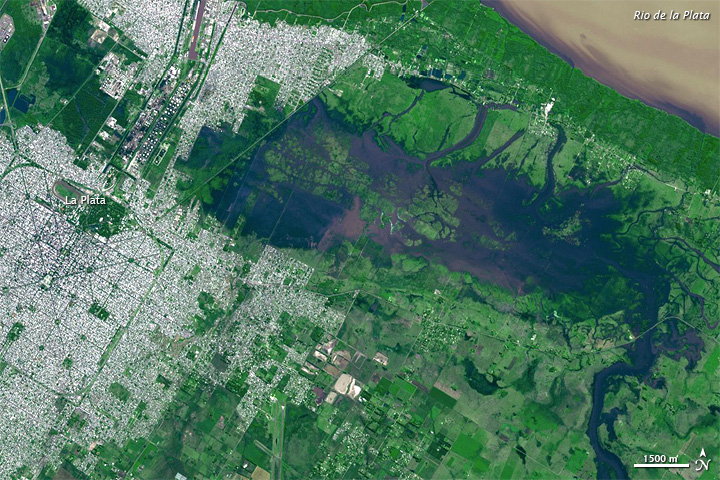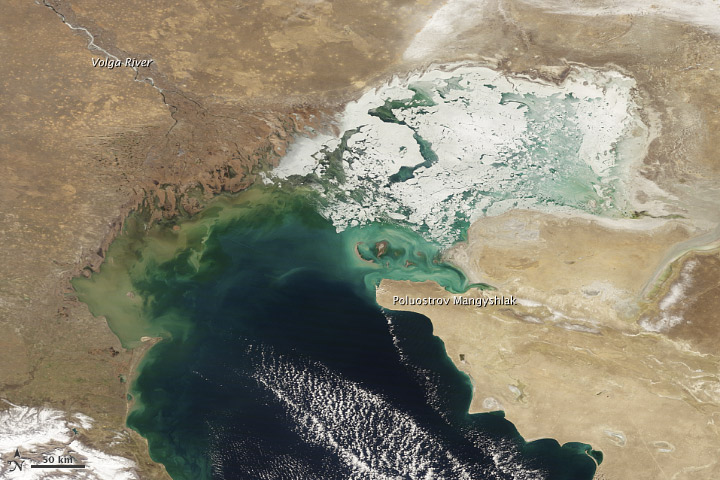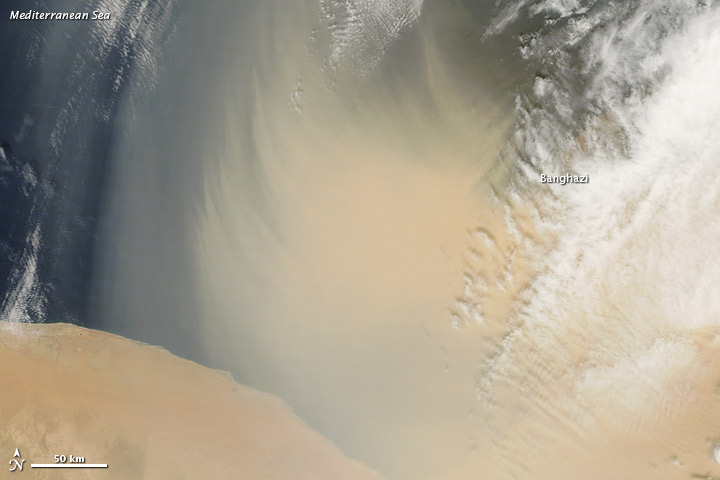In early April 2013, severe flooding claimed more than 50 lives, and forced thousands from their homes in the Buenos Aires region, news sources said. Many of the casualties occurred in La Plata, situated about 60 kilometers (40 miles) southeast of Buenos Aires. Roughly 40 centimeters (16 inches) of rain fell on La Plata in a two-hour period April 2-3, Agence France-Presse reported.
Flood water lingered when the Advanced Spaceborne Thermal Emission and Reflection Radiometer (ASTER) on NASA’s Terra satellite captured this image on April 4, 2013. Read more





